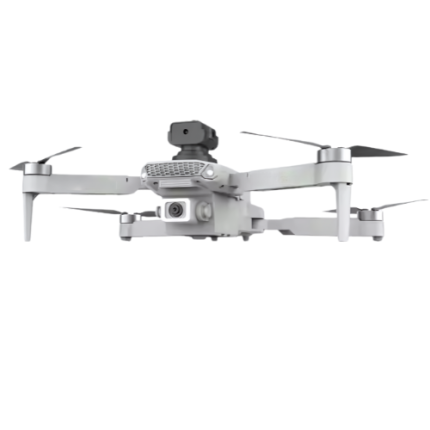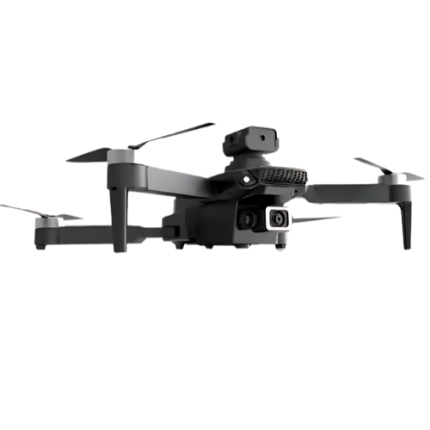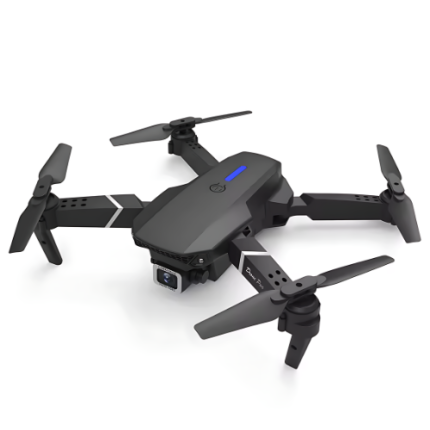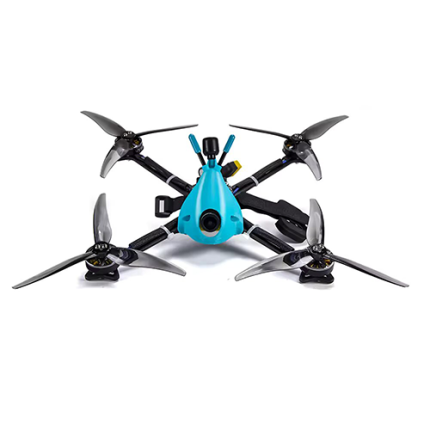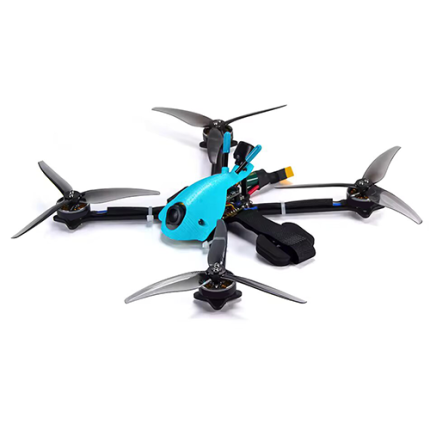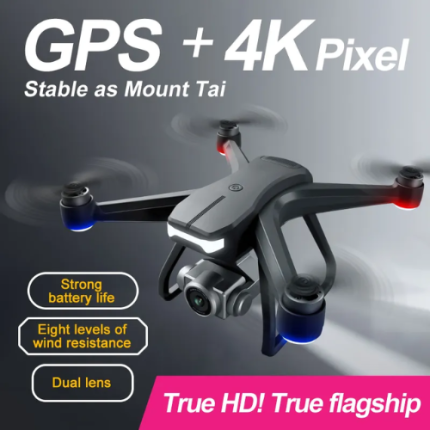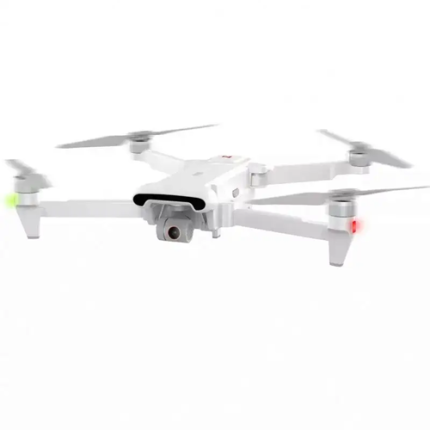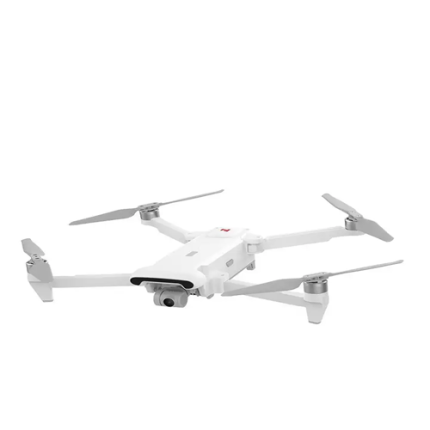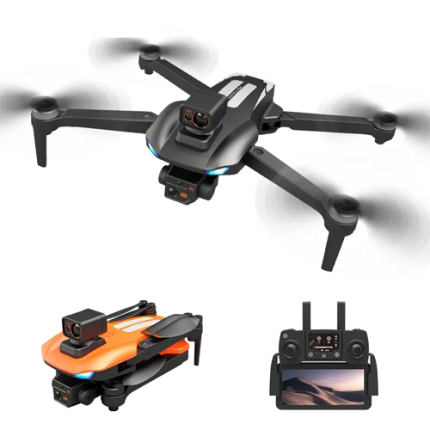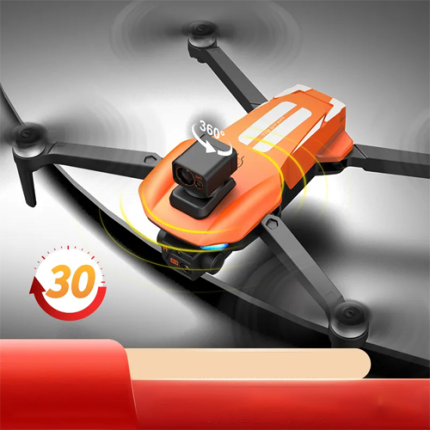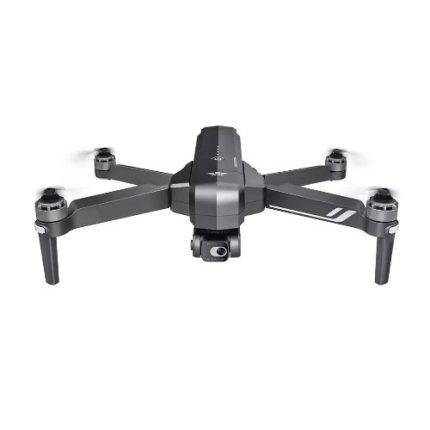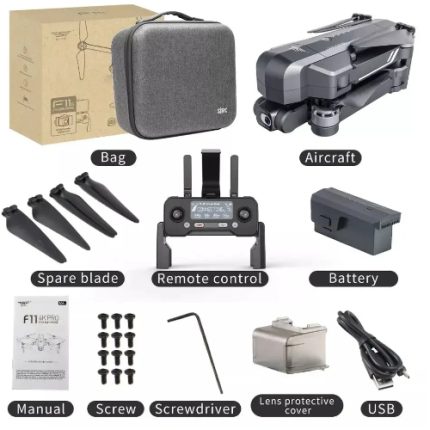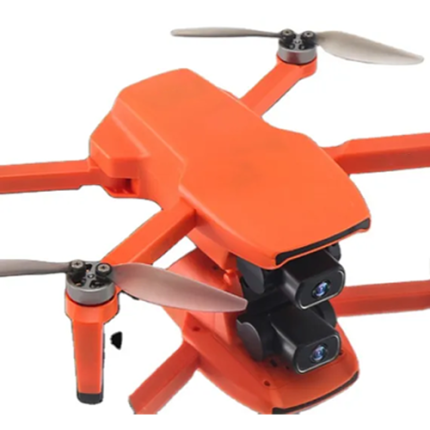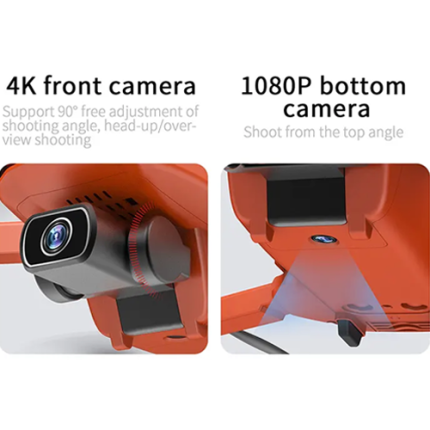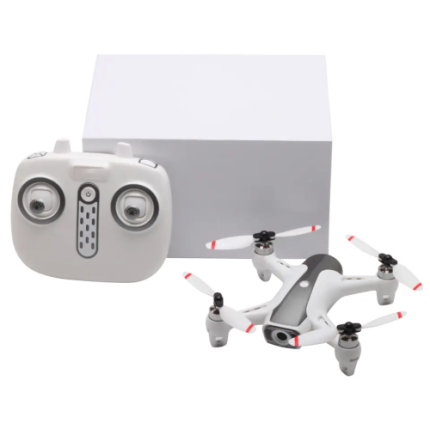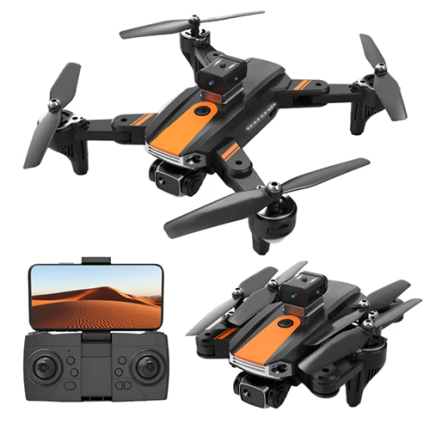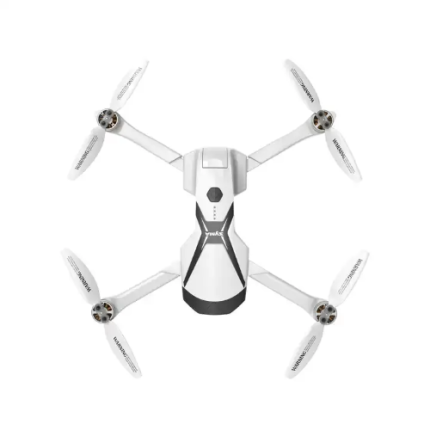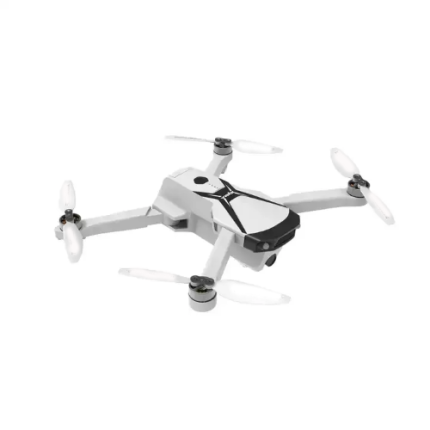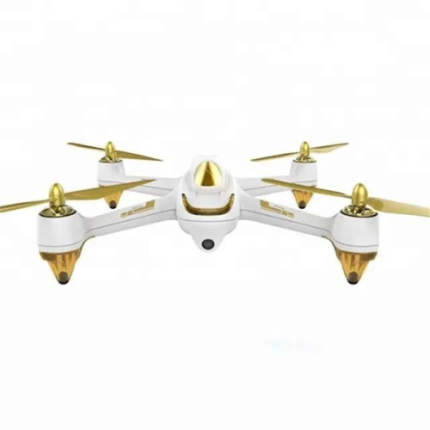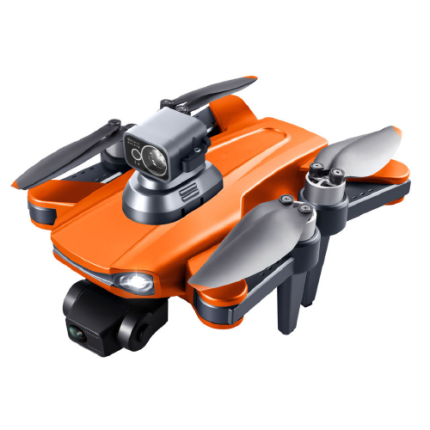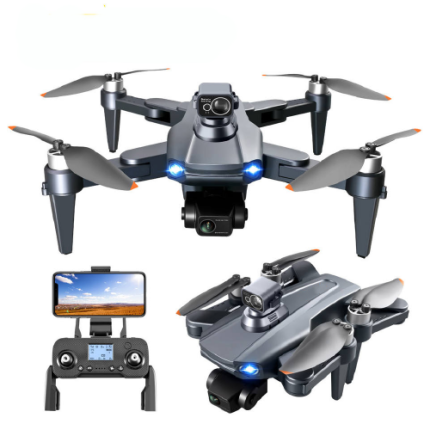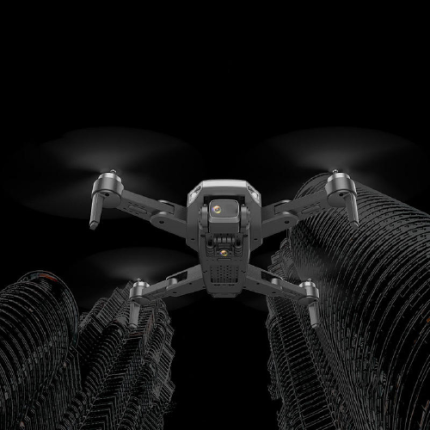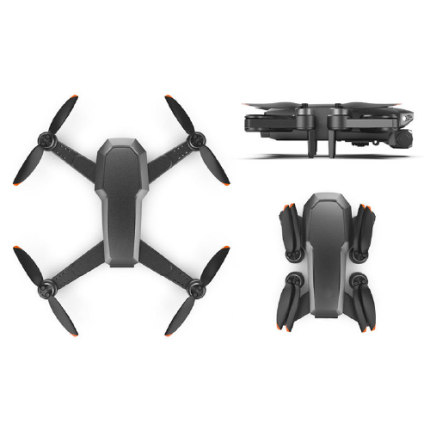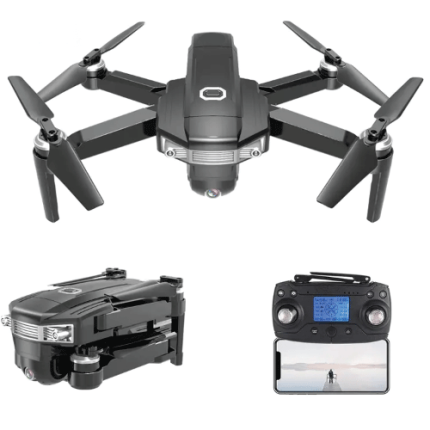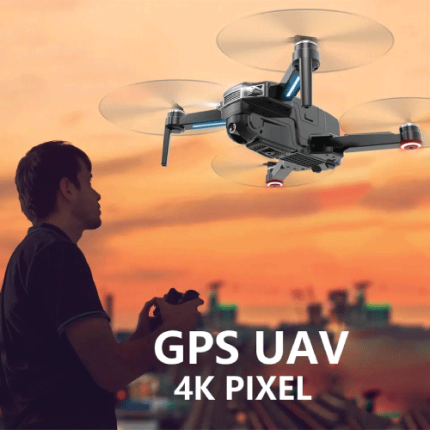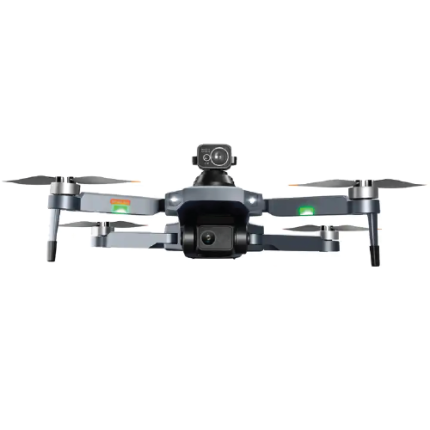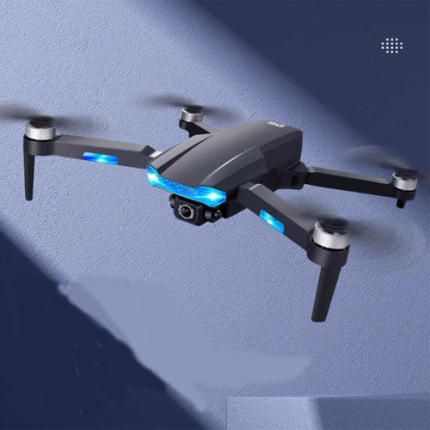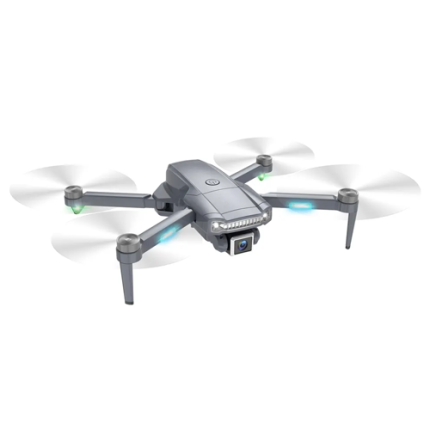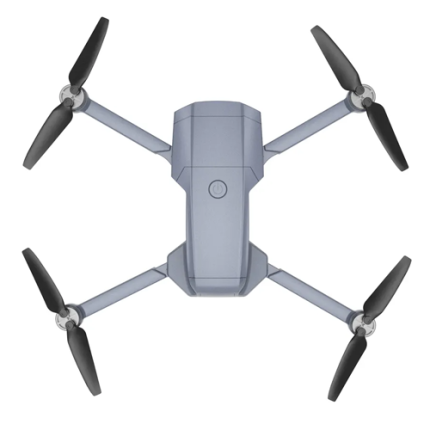GAO’s Semi-Autonomous Drone integrates both manual and automated control systems to enhance operational flexibility and efficiency. It relies on advanced sensors, GPS, and onboard processors to execute predefined missions with minimal human intervention. However, operators retain the ability to intervene and adjust flight paths or parameters in real time. This hybrid approach allows for dynamic responses to unexpected conditions while leveraging automated features like collision avoidance, autonomous takeoff, and landing. The semi-autonomous design is particularly advantageous in complex environments where full autonomy may be impractical or risky. By combining the precision of automation with the adaptability of human oversight, these drones are suited for a range of applications from surveillance to environmental monitoring.
The Semi-Autonomous Drones may also be called: Hybrid Drones, Assisted Autonomous UAVs (Unmanned Aerial Vehicles), Partially Autonomous Drones, Semi-automated UAVs, Interactive Drones, Adaptive Flight Drones, Manual-Aid Drones, and Enhanced Control Drones
Drone with Sprayer Function for Surveillance Operations – GAOTek
Dual Camera Brushless Motor and Remote-Control Drone – GAOTek
Foldable Mini Headless Mode Semi-Autonomous Photography Drone – GAOTek
Foldable Quadcopter Drone with GPS Navigation – GAOTek
Foldable Radio Drone with Camera, App Control and No Remote – GAOTek
FPV Semi-Autonomous Drone with GPS positioning Function – GAOTek
GaoTek Aerial Photography Quadcopter
GAOTek Brushless Motor Long Range Drone
GaoTek Brushless Obstacle Avoidance Quadcopter Drone
GAOTek Drone FPV Brushless Quadcopter RC Drone with GPS and 4k Camera
GAOTek Dual-Camera Aerial Quadcopter
GAOTek Foldable Folding GPS App Control Gesture Sensor Drone
GAOTek Follow Me Mode Quadcopter Helicopter RC Drone
GAOTek FPV Long Distance GPS Quadcopter Drone
GAOTek FPV Quadcopter Long Range Drone
GAOTek FPV Quadcopter Long Range Drone
GAOTek FPV Quadcopter Optical Flow Gesture Control Drone
GAOTek GPS Long Range Quadcopter Drone
GAOTek GPS Outdoor Professional Drone
GAOTek GPS Photography Long Range Drone
GaoTek GPS Quadcopter HD Camera Laser Obstacle Avoidance
GAOTek Helicopter Remote Control Rc Photography Drone
GAO’s Semi-Autonomous Drone is composed of the following components:
- Flight Controller
- GPS Module
- Sensors (altimeters, accelerometers, gyroscopes, magnetometers, obstacle detection sensors)
- Communication System
- Power Supply (battery)
- Motors and Propellers
- Camera and Imaging Systems
- Autonomous Navigation Software
- Manual Control Interface
GAO Tek’s Semi-Autonomous Drone has the following functions:
- Automated Flight Paths: GAO’s Semi-Autonomous Drones can follow pre-programmed flight paths while allowing the operator to intervene or adjust the route in real-time. This capability is useful for missions requiring repeated or precise movements, such as aerial surveys or inspections.
- Obstacle Avoidance: We are equipped with sensors and cameras; these drones can autonomously detect and avoid obstacles. This function is particularly important in complex environments or when flying close to structures, reducing the risk of collisions.
- Real-Time Data Collection and Transmission: GAO Tek Semi-Autonomous Drones can autonomously collect data such as images, video, and sensor readings. They transmit this data in real-time to ground control or cloud systems, facilitating immediate analysis and decision-making.
- Automatic Return-to-Home (RTH): In case of low battery, signal loss, or other issues, these drones can autonomously return to their takeoff point. This safety feature minimizes the risk of losing the drone and ensures it can safely land.
- Adaptive Navigation: These drones adjust their flight paths based on real-time environmental data. For example, they can modify their trajectory to avoid sudden changes in weather or obstacles detected during flight, enhancing flight safety and mission reliability.
- Target Tracking: GAO’s Semi-Autonomous Drones can autonomously track moving targets using onboard sensors and cameras. This function is valuable in applications like surveillance, search and rescue, and wildlife monitoring, where the target's movement needs continuous observation.
- Geofencing and Boundary Management: Drones can operate within defined geographic boundaries set by the operator. Semi-autonomous systems automatically adhere to these geofences, preventing the drone from straying into restricted or hazardous areas.
- Data Analysis and Processing: Some of our semi-autonomous drones are equipped with onboard processing capabilities that allow them to analyze data in flight. For example, they might process images to detect anomalies or generate real-time maps, reducing the need for post-flight analysis.
- Enhanced Flight Stability and Control: Semi-autonomous systems provide improved flight stability by automatically adjusting controls to counteract disturbances such as wind or turbulence. This ensures smoother and more reliable flight performance, even in challenging conditions.
- Mission Customization: Operators can customize mission parameters and flight behaviors through software interfaces. The drone autonomously executes these parameters while allowing manual adjustments if needed, offering flexibility for various tasks.
GAO Tek’s Semi-Autonomous Drone comply with applicable industry standards such as:
- ISO 9001
- ISO 27001
- ASTM F2982
- RTCA DO-178C
- RTCA DO-254
- ICAO Annex 2
- FAA Part 107
- EU Regulation (EU) 2019/947
- CE Certification
- MIL-STD-810
Our Semi-Autonomous Drone helps our customers comply with relevant U.S. government regulations such as:
- FAA Part 107
- 14 CFR Part 91
- 14 CFR Part 101
- 14 CFR Part 135
- 14 CFR Part 137
- FAA Notice 8900.486
- U.S. Department of Transportation (DOT) Regulations
- National Defense Authorization Act (NDAA)
Our Semi-Autonomous Drone helps our customers comply with relevant Canadian government regulations such as:
- Canadian Aviation Regulations (CARs) Part IX
- Transport Canada TP 15263
- Transport Canada RPAS Safety Guidelines
- Canadian Air Navigation Service Regulations
- Privacy Act
- Personal Information Protection and Electronic Documents Act (PIPEDA)
Our Semi-Autonomous Drone has the following applications:
- Infrastructure Inspection: These drones are used to inspect and monitor infrastructure such as bridges, towers, and pipelines. They can follow predefined flight paths and capture high-resolution images or videos, allowing engineers to identify issues like cracks or corrosion with minimal manual intervention.
- Agricultural Monitoring: In agriculture, our semi-autonomous drones are employed to monitor crop health, soil conditions, and irrigation systems. They can autonomously survey large fields and generate detailed reports or maps, helping farmers make data-driven decisions on crop management and resource allocation.
- Environmental Conservation: Environmental scientists use semi-autonomous drones to study wildlife, track deforestation, and monitor natural habitats. The drones can navigate complex terrains and collect data on environmental conditions, aiding in conservation efforts and research.
- Search and Rescue Operations: During search and rescue missions, these drones provide valuable assistance by autonomously surveying large areas and tracking movement. They can be programmed to search specific zones and relay real-time data to rescue teams, enhancing their efficiency in locating missing persons.
- Surveillance and Security: GAO’s Semi-Autonomous Drones are utilized for surveillance and security purposes, such as monitoring borders, critical infrastructure, or large public events. They can follow predefined patrol routes and adjust their behavior based on real-time data, offering enhanced situational awareness.
- Construction Site Monitoring: In construction, these drones monitor project progress, ensure safety compliance, and conduct inspections. They can autonomously map construction sites, track equipment, and identify potential issues, providing valuable insights to project managers.
- Broadcasting and Media Production: GAO Tek Semi-Autonomous Drones are used in media production to capture dynamic aerial footage and live streams. They can execute predefined flight patterns and adjust to changing conditions, delivering high-quality visuals for events, sports, and films.
- Disaster Response: In disaster response scenarios, these drones can autonomously survey affected areas, assess damage, and assist in planning relief efforts. They provide real-time data that helps emergency responders prioritize actions and allocate resources effectively.
- Mining Operations: GAO’s Semi-Autonomous Drones are employed for surveying and mapping mining sites. They can autonomously collect data on terrain, stockpiles, and equipment, supporting operational planning and monitoring.
- Delivery Services: Emerging applications include using semi-autonomous drones for package delivery. These drones can follow specific delivery routes and handle certain tasks autonomously, improving efficiency and reducing the need for manual intervention.
Below are our resource pages containing useful information on Semi-Autonomous Drones:
FAQs on Semi-Autonomous Drones on GAOTek.com
How to Choose a Semi-Autonomous Drone
Components of a Semi-Autonomous Drone
Operation, Maintenance & Calibration of a Semi-Autonomous Drone
Customers in the U.S. and Canada of Semi-Autonomous Drones
Our Semi-Autonomous Drones are in stock, can be shipped overnight within the continental U.S. and Canada from a nearby warehouse in the U.S. or Canada, and can be shipped globally.
We provide 24/7 support. If you have any questions, our technical experts can help you. Please fill out this form or email us.



